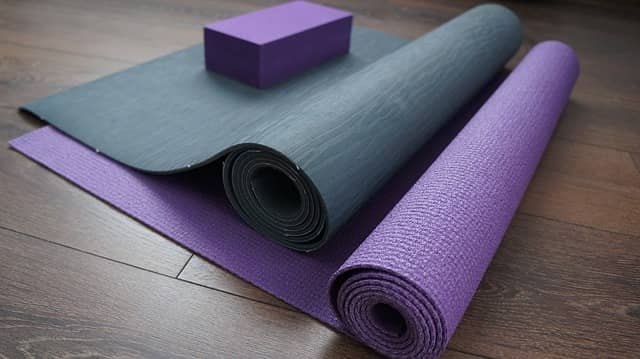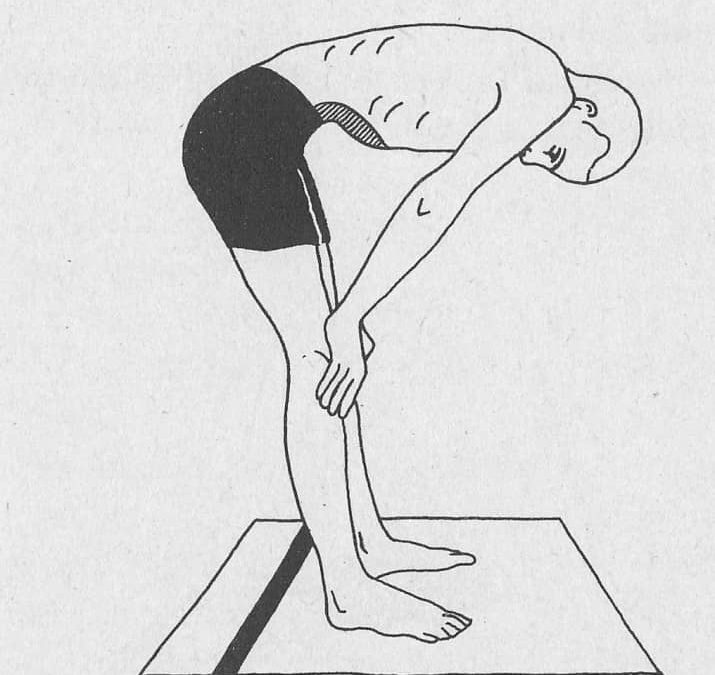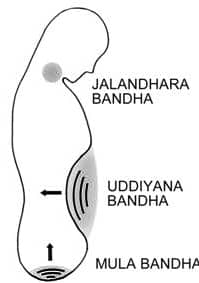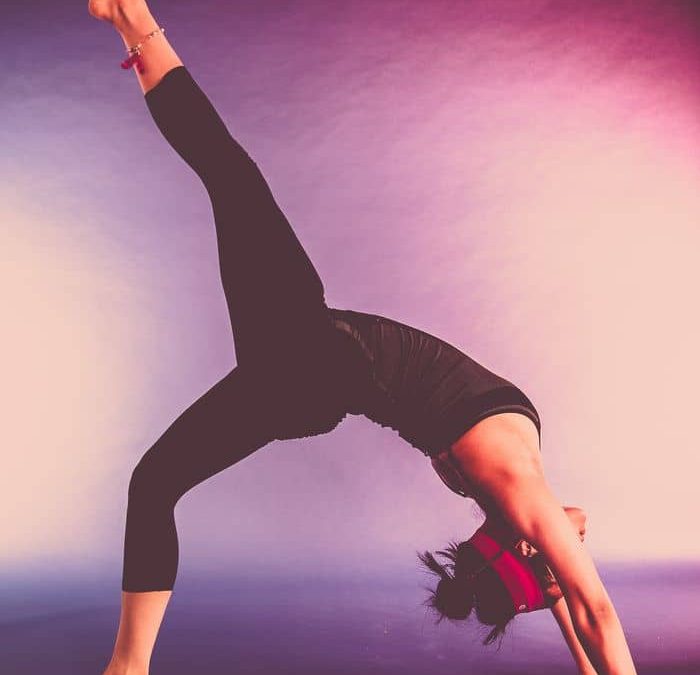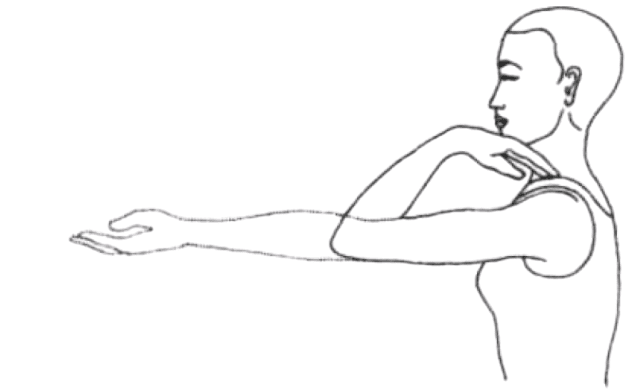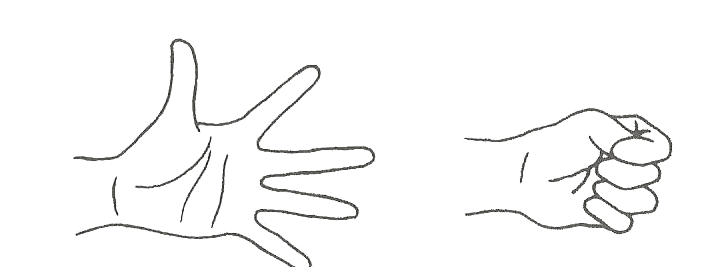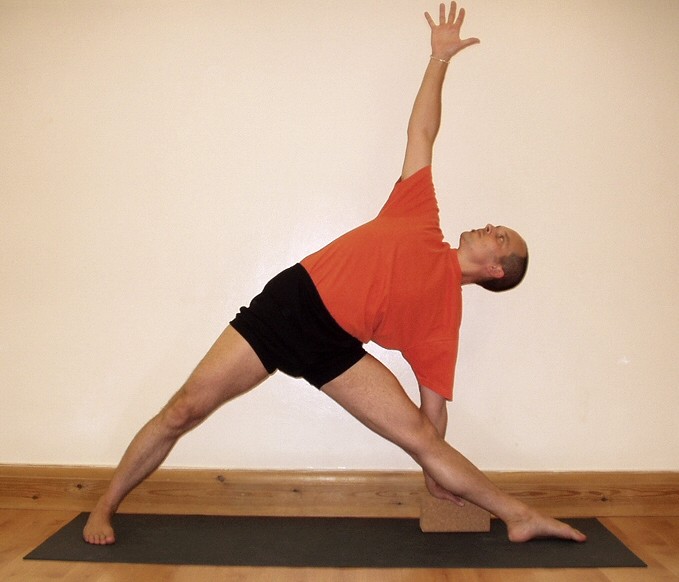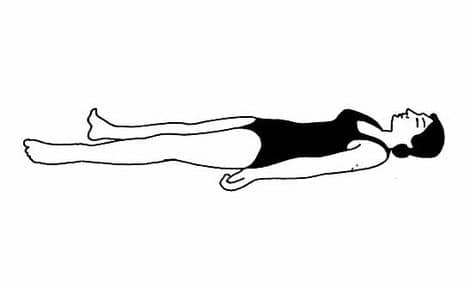
by Yoga In Nepal | Oct 15, 2020 | Yoga
15 tips on how to clean yoga mat
Cleaning any equipment is very important to increase the longevity and help the equipment work pretty well in the end. Yoga mat becomes dirty if you use it for a longer period without cleaning them. While you practice yoga at the yoga center or yoga studio you do not need to clean the mat in the studio whereas you need to clean mat by yourself at home. If you are worried and do not know much about how to clean the yoga mat at home, then no need to worry. We have compiled everything you need to know to disinfect the yoga mats.
- It is necessary to clean the mat used by hot yoga or Bikram yoga practitioners too often or after every yoga session.
- Those practitioners who have high sweating frequency should know how to clean yoga mat on a regular basis, the sweatier the mat, the dirtier it gets.
- Those yoga practitioners who practice at home and do not sweat much can clean the yoga mat in the few days interval
- It is usually recommended to use the organic yoga mat spray to the mats. There are many yoga sprays available out there in the market.
- For those who love home remedies on how to clean the yoga mat, it is even easier to prepare the natural cleaner. The natural yoga mat spray can be prepared using 1 part of vinegar to the 3 parts water in a spray bottle with 5 to 10 drops of your favorite antimicrobial essential oil for example eucalyptus can be useful or use of tea is also handy.
- Sometimes wiping out the mat is not always useful. It is sometimes prudent to take the mat to the bathtub in a bid for deep cleaning. Wiping out is handy if we want to take away the stuff from the surface only, however, there are some stains that do not easily go out, in such a case stubborn areas can be wiped out using rubber in a bathtub using hot or lukewarm water.
- There is also an easy way on how to clean yoga mat in the cleaner for a longer period of time. For that you need to keep your hands and feet’s clean. Before entering into the mat you must first, clean your hands and feet repeatedly. It only takes a few minutes to obliterate the waste from your legs and hands. Likewise, there are many convenient ways to clean, for instance, the use of travel wipes is recommended.
- Before using the mat after washing the mat, it is often recommended to let the mat completely dry first. It does not matter whether you thoroughly washed or you cleaned using the spray. It is always recommended to leave it lying flat for some time.
- The mat also should not be rolled for a longer period because the shape of the mat might be distorted.
- There are a lot of options to buy a mat. There are also some antimicrobial mats, which are eco-friendly and works to absorb the sweats of yoga practitioners. The anti-microbial mats help to make the mat much cleaner and free from noisome smell.
- The frequency of the cleaning mat is contingent upon the technique you use to do the workout on the mat. Other factors are the surrounding environment, it does not matter how dirty or clean it is however, depends on the intensity of the practice in the mat.
- If you use the mat with care, the longevity of the mat increases.
- It is recommended not to use much soap water to clean the mat. A thin and slippery film is developed on the surface of the mat by using excessive soap, likewise, increases the odds of being injured.
- In a bid to remove the foul smell from the mat, it is usually recommended to dry the mat in clean air on a regular basis.
- Use both sides of the mat and follow all the protocols religiously to get the benefits
Hope These tips on how to clean yoga mat and keep your mat healthy tips is useful. For further knowledge on yoga and health-related things, click here to see our blog posts/

by Yoga In Nepal | Oct 11, 2020 | Yoga
The fact of Yoga that should not be Misunderstood
In this article, we discuss the fact of yoga which you might not hear about it. For most of the newbies to yoga, it is obvious to not have a complete idea about yoga, though you might have heard it somewhere or watched a video on YouTube. Following yogis on Instagram and taking a few classes does not suffice to know about Yoga and Yogis. There also might be chances of hearing some of the negative information about yoga and yogis. It is a universal truth that even the perfect yogi is still in the quest to know further about yoga and yogic lifestyle.
In a bid to clear the conflicting information and increase the cognizance of the readers about yoga and yogis, we have compiled the facts of yoga.
1. Yoga is not a religion- must know the fact of yoga
Yoga does not discriminate and yoga is not a religion. It belongs to any neither special sects, religion or ethnicity, or a particular region. Yoga is universal. The evidence of yoga being a universal property was evident in the 11th century when great scholar Al-Beruni was commissioned by the then notorious Sultan Mahmud of Ghazni from Afghanistan to translate Patanjali Yoga sutra.
The sutra was translated from Sanskrit to Arabic, not even Nepali or Hindi!! It is a popular book in Arabic countries and named ‘Kitab Patanjali’. This endorsement of yoga by the notorious Sultan of the then time verifies that yoga is universal and not associated with any particular religion.
2. The Next fact of Yoga is gender-neutral practice and does not bias any religion, sects, and gender
Yoga does not discriminate in fact, yoga joins. The meaning of yoga is to connect, to join, and to make strong. The statistics show that women than that of men dominate the yoga practitioners. Women are working on the front-line to make the workplace healthier and happier.
An interesting fact of yoga is, there are some yoga organizations like Brahma Kumaris World Spiritual University, which is solely run by unmarried women. Likewise, there are special poses for women to keep them healthy and hearty. There is another a lot of shreds of evidence that verifies that yoga is gender-neutral yoga is more women-friendly.
3. Yoga is Not a Trend, but the fact of yoga is Science of Health
Unlike other trends that run for a couple of days or even a few months, yoga is not a trend. Neither yoga is a fashion. For a novice and non-yogi, it might seem that the practice is nothing but a new way of doing exercise by seeing the hippies adopting yoga and moms practicing yoga wearing yoga pants. However, such a saying of yoga being a trend is based on circular reasoning.
The true fact of yoga is completely different. Yoga is ancient, yet it can rejuvenate the practitioners. The origin of yoga dates back to 4500-2500 BCE. At that, time yoga was not all about physical form, but the study of mind, body, and soul, by practicing mantras, meditation-studying philosophy, learning ethical values, etc. The physical practice came into extant at the beginning of the 17th century, which has become a universal phenomenon of practice.
4. The popularity of yoga is growing
There are numerous shreds of evidence that the practitioners of yoga are on rife. Based on the statistics of yoga we can easily say that not only more people are being attracted to yoga, but also more and more fund is spent on yoga equipment like clothes, and other accessories, daily classes, etc. This is all credited to the blatant benefits of practicing yoga.
Some key findings from the statistics
- There are 36 million Americans practicing yoga daily
- 300 million yoga geeks practice daily.
- Between 2012 and 2016 the number of Americans doing yoga grew by 50%.
- There was a rife of 50 percent yoga practitioners between the year 2012 to 2016.
- Many yoga practitioners believe yoga releases their stress and increases the flexibility of the mind, body, and soul.
- In one year Americans spend as much as $16 billion in yoga class, buying equipment and accessories needed to practice yoga.
5. Adiyogi is the first guru of Yoga, according to Hindu mythology.
6. Swami Vivekananda took yoga from South Asia to the West, where today many people are tuning into yoga practice.
7. B K S Iyengar is considered as the father of modern yoga by his ardent followers, furthermore, he is also known for the modern yoga class worldwide. His yoga is known as Iyengar yoga
8. The oldest text in the world–Rig Veda was written by Yogis.

by Yoga In Nepal | Oct 7, 2020 | Yoga
4 types of Yogic Bandha techniques
The literal meaning of Bandha is to lock, to prevent from entering, control, and close off or to stop. The special technique in yoga helps you to re-orient the energy flow to a particular area of the body where desired and prevent the energy flow to a particular area is clogged off. There are various benefits of practicing yogic bandha, the main benefit is that the energy or ‘prana’ is believed to flow inside the body. While practicing yogic bandha techniques the certain organs or parts of the body are controlled or contracted. ‘Prana’ (प्राण) means “life force”, or “vital principle” of our body.
The main work of bandhas is to flow the pranic energy through nadis (energy meridians). Likewise, other functions of bandhas include modification of the flow of nerve currents in the nervous system and smooth flow of blood through the blood vessels. Altogether, there are four main Bandhas in Pranayama, which have their own peculiarity and have their own benefits, which we will discuss in the article. The four main yogic bandha are Mula Bandha, Uddiyana Bandha and Jalandhara Bandha, and Uddiyana Bandha.
Following are the four types of bandhas
Short description:
Mula Bandha – The root lock
Uddiyana Bandha – Lifting of the Diaphragm lock
Jalandhara Bandha – The throat lock
Maha Bandha – all three locks at the same time.
1. Mula Bandha

The word mula means root, or the source of origin or cause, base and the foundation. The prime location of the mula is at the base of the spine, which is also called perineum. The main function of the mula banda is to lock the energy, and halt the energy flow to downward. The clogging of the downward part prevents the flow of energy and rises the energy upward.
The asanas can be used during standing, backbends and during first chakra poses. The mula bandha asana is helpful for the organs of reproduction. The yogic bandha can be blended with PUraka (internal) or Rechaka (external) and Kumbhaka.
2. Uddiyana Bandha
The literal meaning of Uddiyana is to fly up. The technique is used for the flow of energy mainly to upward, via Sushumna Nadi. The protocol of practicing Uddiyana Bandha is to draw the abdomen in and up; likewise, the diaphragm and internal organs up into or toward the chest (thorax) is also practiced. The benefits of practicing Uddiyana Bandha are:
- Easing of the digestion process through buttressing of the digestive organs.
- Energize and strengthens the abdominal muscles.
- Helps to energize the organs of the body.
3. Jalandhara Bandha
The literal meaning of Jalandhara is a net, a web, a lattice or a mesh. The protocol of practicing Jalandhara Bandha is to contract the neck and throat. While practicing the techniques, the chin is lowered and taken towards the chest by lengthening of the neck. While there are various benefits of practicing Jalandhara Bandha, if it is practiced improperly then the pressure starts to exert on the eyes, ears and brain and causes different problems like headaches and others.
4. Maha Bandha- Includes all 3 yogic Bandha

When all three bandhas: Mula Bandha, Jalandhara Bandha, Uddiyana Bandha are engaged together, the energy starts to meet together at a specific point in the navel. This practice is called Maha Bandha. The energy increases and helps to awaken various nadhis and the nadi suddhi takes place by practicing maha bandha. The main purpose of practicing bandha is to awaken and purify prana.
All in all the purpose of practicing all forms of yogic bandha is to make and buttress the ability to regulate the energy. Mainly the energy through out the body is regulated.

by Yoga In Nepal | Oct 4, 2020 | Yoga
Cosmic yoga for kids
An actor cum yogi of Cosmic Kids Yoga is ruling the YouTube followers. She is attired in a blue onesie, which is the best choice for a yoga guru to attract attention, though white or yellow is preferred by yogis. The YouTube sensation whose channel has become an indispensable part of the parents who have small children mostly lucidly narrates the yoga classes, which could not be easy, shun off even by the most anxious kids. Many practitioners claim that her way of narrating the yoga class is like saying well-plotted stories in movies like “Star Wars” or “Game of Thrones”, which ignites the curiosity of what she will going to do.
Just like any other yogis whose age is hard to tell. Because most of the yogis’ gurus look younger than their age. The 40-year old yoga master looks younger than her age. She had very few subscribers during the early day of her YouTube career, however after lockdown, her YouTube channel has gleaned as many 928K subscribers, 72 thousand more to hit the 1 million mark. Her first video surfaced on the internet in 2012 A.D. However, they were not much popular and she had not much follower at that time, all thanks to lockdown her YouTube channel is a sensational hit. The total number of views she has gleaned has crossed 186,323,456 views and its increasing daily.
How did Cosmic yoga for kids start?
Ms. Amor was among the fortunate kids, her parents taught her aerobics. The lesson learned during her childhood became the life lesson and her along with her two staffs along with her encouraging husband Martin Amor run the program. The journey of her yoga teaching begun around 2010 when she first started teaching simple yet important and handy yoga lessons to children near her house in Thames, UK. Soon she kicked off videotaping the yoga and started uploading in her YouTube channel in 2012 A.D. This is how Cosmic yoga started.
The way she has burgeoned in the last couple of months, it is evident that she will hit millions of followers in the upcoming days. Right now, most of the followers are based in the English speaking country, the places hit hard by the corona as most of the parents, and kids are locked inside their home.
Stars of the shows
She is the lone star of the show, except a few instances where she introduces her cockapoo Mini, which role is to observe the yoga and nothing more. Likewise, her labradoodle Spence is also getting some hits these days. The actor by profession had tried many jobs or roles in the theatre, likewise in the TV also, however, she could not be a theatre sensational that could meet her desire. The job was only to fulfill her day-to-day needs by making some dimes.
Her lucid and attractive way of teaching sprung from the entertainment she used to do for kids. In the past also she used the funny dress of pirates, fairy, and princess to attract them and recite stories of princesses, games, and magic, which kids love to hear. That’s why it is a cup of tea for her to narrate any sorts of stories to kids which she experimented in the Yoga shows that led her to become a YouTube sensation.
Benefits of Cosmic Yoga for kids
There are many benefits of yoga and cosmic yoga, which is also based on the core philosophy of yoga, is no different. The fun stories help to attract kids. The whole session starts with laughter and ends with the same. Kids learn compassion, become resilient, the stress in kids is reduced due to fun activities involved in the show. Likewise, a seed of yoga is sown by watching the video as kids learn yoga during their childhood, which becomes an indispensable part of many in the days to come.

by Yoga In Nepal | Sep 15, 2020 | Yoga
Introduction to Core Power Yoga
Have you ever heard of core power yoga? If you do not have, you do not need to worry, as the philosophy of the core power yoga is new, you are not alone there are many people oblivion about it. Furthermore, it has very few resources on the internet. If you want to know more about the core power yoga, then this article is for you. In this article, we will delve to disseminate the philosophy of it and its benefits to the human mind, body, and soul.
In the age of hustle and bustle where the cities run for 24 hours, it is very difficult to find peace. In a bid to overcome such a new form of yoga was developed which is called core power yoga. In this form of yoga, three yogas namely: Power yoga, core yoga, and hot yoga or Bikram yoga are conflated to make the core power yoga.
How to perform core power yoga?
It is not as simple as it is to utter. It involves many strenuous exercises, which help to keep you fit and healthy. However, the practitioners feel exhausted after completing the yoga. Notwithstanding the fact that it demands high energy and physical force, it is also true that it involves some of the mundane spiritual activities which are the ancient philosophy of the eastern world.
The world is growing with a multi-disciplinary field, and more types of vigorous exercises are increasing in demand. Core power is a conflation of multidisciplinary yoga. It is helpful to empower the physical and mental health of the human, which is, in fact, the prerequisite to be healthy and hearty. Many practitioners have shared their views that core power yoga is useful to go inward through both physical and spiritual exercise. The more practitioners practice the core power yoga, their ability to focus increases sharply, thus helps the students on their studies to ace in their examination.
History
Core power yoga is also called Power Vinyasa. The critics claim that it is the westernized form of Ashtanga Yoga, a popular form of yoga in the Eastern world. It is believed that the ardent follower of Ashtanga yoga who has practiced Ashtanga yoga for many years whose name was Beryal Bender Birch was the one who coined the term Core power yoga. It is the conflation of three forms of yoga: Power yoga, core yoga, and hot yoga.
Due to the newness of the yoga, it is quite sure of what to expect and what to not while practicing core power yoga. Due to the conflation of the three forms of yoga, you might not know which styles to choose form and which one results the best result. It has kicked off to make many impacts in today’s world; mostly westerners are practicing it religiously and reaping the desired benefits.
How could one forget the history of Ashtanga yoga then? Sri K Pattabhi Jois, an Indian ancient yogi was not only responsible for sharing the knowledge and philosophies of Ashtanga yoga. But also he was the great scholar of Sanskrit. However, westerners were the ones who were responsible to morph the Ashtanga yoga to Core power yoga and disseminated in the western sphere of the world.
Benefits of Core Power Yoga
- The demanding form of exercise will help you to keep physically fit and make you sturdy. Strength, flexibility, and endurance are the perks of practicing power yoga.
- Helps in improving the power of concentration.
- Weight loss
- Peace of mind.
Hope you enjoy the history and philosophy of this new concept of core power yoga. visit our blog section to get more information about more yoga and health tips.

by Yoga In Nepal | Aug 30, 2020 | Yoga
10 best anti-rheumatic yoga exercise/ Sukshma Vyayama practice- Introduction
Before plugging in into anti-rheumatic yoga exercise, let us delve into rheumatoid arthritis first, which in the Nepali language is popularly called Bath disease. The disease targets the immune system of the human body causing inflammatory symptoms and extra-articular involvement.
The unique characteristics of Rheumatic disease are there is no laboratory test to determine the pathognomonic of rheumatic disease. The person suffering from rheumatic disease has high morbidity. The disease decreases the life expectancy of a person by causing increased atherosclerosis and different heart-related diseases.
The various scientific literature has pointed out that yoga can be a useful weapon to fight against rheumatoid arthritis (RA). The stiffness of muscles and joints gets relieved by practicing Sukshma Vyayama or anti-rheumatic yoga exercise for a couple of hours; however, the literature has pointed out that yoga should be practiced regularly on a daily basis.

Various researches have been carried out to know the benefits of yoga on rheumatic diseases. Most of them have pointed out that yoga relieves pain on the rheumatic disease, increases flexibility, and helps to boost the mood of the person suffering from rheumatic disease. Sukshma Vyayama or anti-rheumatic yoga exercise helps to open your joint which always fight against rheumatic disease.
Likewise, the joint function becomes smooth and the movement of the patient becomes flexible. However, it is advised to take the medical practitioners’ advice before joining any sorts of yoga classes because the symptoms might vary and some yoga positions might not suit one patient over another. Here are the list of 10 Sukshma Vyayama or anti-rheumatic yoga exercise

1. Regular movement
Many medical practitioners advise their patients to be involved in regular movement. The regular movement of a person increases the flexibility of the person, subdues the hardness of the muscles, and increases the range of motion. Most importantly, it is advised to stretch early in the morning, thereby reducing rheumatic pain. It is often recommended to involve in the slow and gentle movement of the joints, knees, hands, and elbows of the person suffering from Rheumatic disease.
The following protocol is advised to practice:
- Regular movement of the hands and the muscles by walking or pumping the arms while sitting or standing.
- Stretching the legs muscles for 10-20 seconds before discharging it.
- Practicing the techniques repeatedly not less than 4-5 times for the next couple of minutes.
- For the newbies, it is most often advised to learn from a physiotherapist before starting the practice on their own.
2. Strolling a Sukshma Vyayama or anti-rheumatic yoga exercise
Strolling aimlessly is considered baneful in the normal situation. However, if you are suffering from rheumatoid then it is no less than a useful drug to intake. In spite of being the low impact form of exercise, strolling helps you to increase the blood circulation, improves heart condition, and makes the better mood of the practitioners.
3. Forward Fold
While practicing forward fold steadily the spine is rolled down in order to hang forward. While doing the forward fold pose, the weight is concentrated in the middle of the feet. One should take care that the knees do not get locked or roll in and out with the feet. The upper part of the body should hang creating no tension and the head must be relaxed to get the most of the benefit.
Side angle pose an anti-rheumatic yoga exercise/ Sukshma Vyayama practice
The face should be laid down with the feet resting on the floor. On the floor, the palms are made flat, likewise the chest and elbows in the close to the body. However, it is not easy for rheumatoid patients to make the palms flat on the floor. In such a situation, fists and elbows are used. Slowly, without creating any sorts of stress, head, neck, and chest are lifted off the floor, and the forward gazing is practiced while doing these feet and legs are kept down.
5. Side Angle Pose

The simple yet important protocol that should be practiced while performing side angle pose are the feet should be kept 4 ft. apart and the right foot out to the 90 degrees and the angle of the left foot should be 45 degrees.
The right knee should be bent and the knee should be directed towards the toes. Slowly, bring the right elbow to the bent right knee and the left arm is extended alongside the left ear. While practicing the side angle pose the continuous diagonal line from the back left foot to the extended left arm should be made. This Sukshma Vyayama or anti-rheumatic yoga exercise is very helpful to open joint and keep it strong.
6. Savasana

After completing major exercises, it is important to practice savasana or a relaxation technique to relax and make you feel better and rejuvenated. This Sukshma Vyayama or anti-rheumatic yoga exercise aids you to get back to the original heart rate and back to the normal situation again.
7. Strengthening the body
8. Hand and leg exercises
9. Pedaling and running
10. Repeating all forms of exercise on a regular basis.
